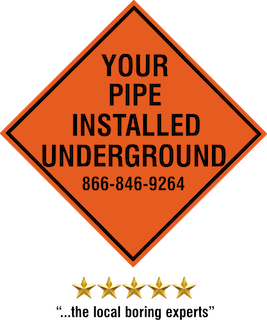HDD Rock Drilling
Wisconsin Trenchless - HDD Rock Drilling Contractors
Horizontal Directional Drilling (HDD) in challenging subsurface conditions like rock, gravel, cobble, or shelf rock requires specialized techniques and equipment to ensure success. When blasting isn’t an option due to safety, environmental, or regulatory concerns, HDD rock drilling methods come into play. Here’s an explanation of how HDD rock drilling is utilized under these conditions:
Wisconsin Trenchless - HDD Rock Drilling Companies
1. Assessing Subsurface Conditions
Before drilling, detailed geological surveys are conducted to understand the type of rock, its hardness (measured in PSI), and its composition (e.g., gravel, cobble, or solid shelf rock). This information informs the selection of appropriate equipment and techniques.
2. Equipment and Technology for HDD Rock Drilling
- Mud Motor (Positive Displacement Motor – PDM):
Mud motors are essential for cutting through hard rock. They are powered by the drilling fluid (mud), converting hydraulic energy into mechanical energy to drive the drill bit. These are particularly effective in shelf rock or high PSI formations. - Specialized Cutting Heads:
Rock-specific cutting heads, such as:
- Tricone Bits: Used for breaking through hard rock.
- Polycrystalline Diamond Compact (PDC) Bits: For ultra-hard formations.
- Coring Bits: To drill through mixed formations like cobble and gravel.
- High-Torque Drill Rigs:
Rigs with high torque and thrust capabilities are necessary for penetrating tough rock and maintaining steady progress.
3. Drilling Fluids (Mud) Optimization
Drilling fluids are customized for rock drilling to:
- Lubricate the cutting head.
- Carry rock cuttings back to the surface.
- Stabilize the borehole.
- Reduce friction and heat in high-PSI formations.
Additives like bentonite or polymers may be included to improve mud performance.
4. Drilling Process
- Pilot Borehole Creation:
The drill begins by creating a pilot hole using the mud motor and cutting head. The guidance system ensures precise navigation through rock layers without deviation. - Steering in Rock:
Steering is achieved by adjusting the orientation of the mud motor and cutting head. The process requires real-time adjustments using advanced tracking systems. - Rock Breaking Without Blasting:
Cutting heads with carbide or diamond elements chip away at the rock, while the mud motor provides continuous rotation and thrust.
5. Managing Mixed Formations
- Cobble and Gravel Challenges:
These conditions require frequent adjustments in mud viscosity to maintain borehole stability and prevent collapse. Reaming passes may also be necessary to enlarge and smooth the borehole. - Transition Zones:
When transitioning from soft soil to rock, operators carefully monitor equipment wear and fluid dynamics to avoid equipment failure.
6. Hole Enlargement and Installation
- Reaming:
Once the pilot bore is complete, reamers with rock-cutting teeth are used to enlarge the borehole to the desired diameter. - Pullback of Utilities:
The product pipe is pulled into place, with drilling fluid ensuring smooth movement through the borehole.
7. When Blasting Isn’t an Option
HDD rock drilling becomes invaluable in:
- Urban environments where blasting poses risks to structures.
- Sensitive ecological areas where blasting could harm wildlife or water sources.
- Regulatory zones where explosives are restricted.
Advantages of HDD Rock Drilling
- Minimally invasive and trenchless.
- Precise and controlled drilling in hard rock formations.
- Environmentally friendly compared to blasting.
- Can navigate mixed formations and challenging subsurface conditions.
Wisconsin Trenchless - HDD Rock Drilling Near Me
With the right planning, equipment, and expertise, HDD rock drilling provides an efficient and safe solution for installing utilities in tough geological environments where traditional methods fail.


